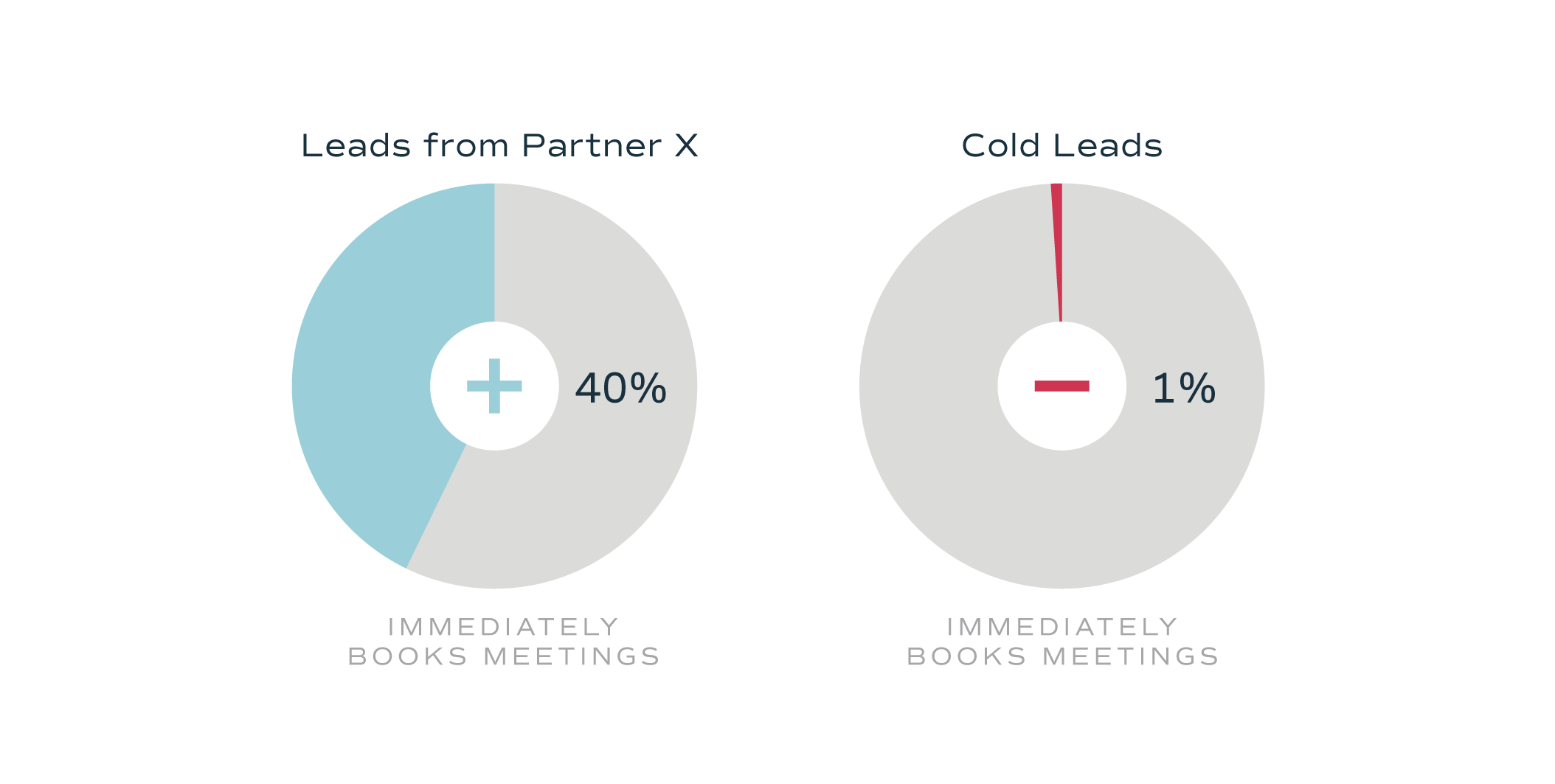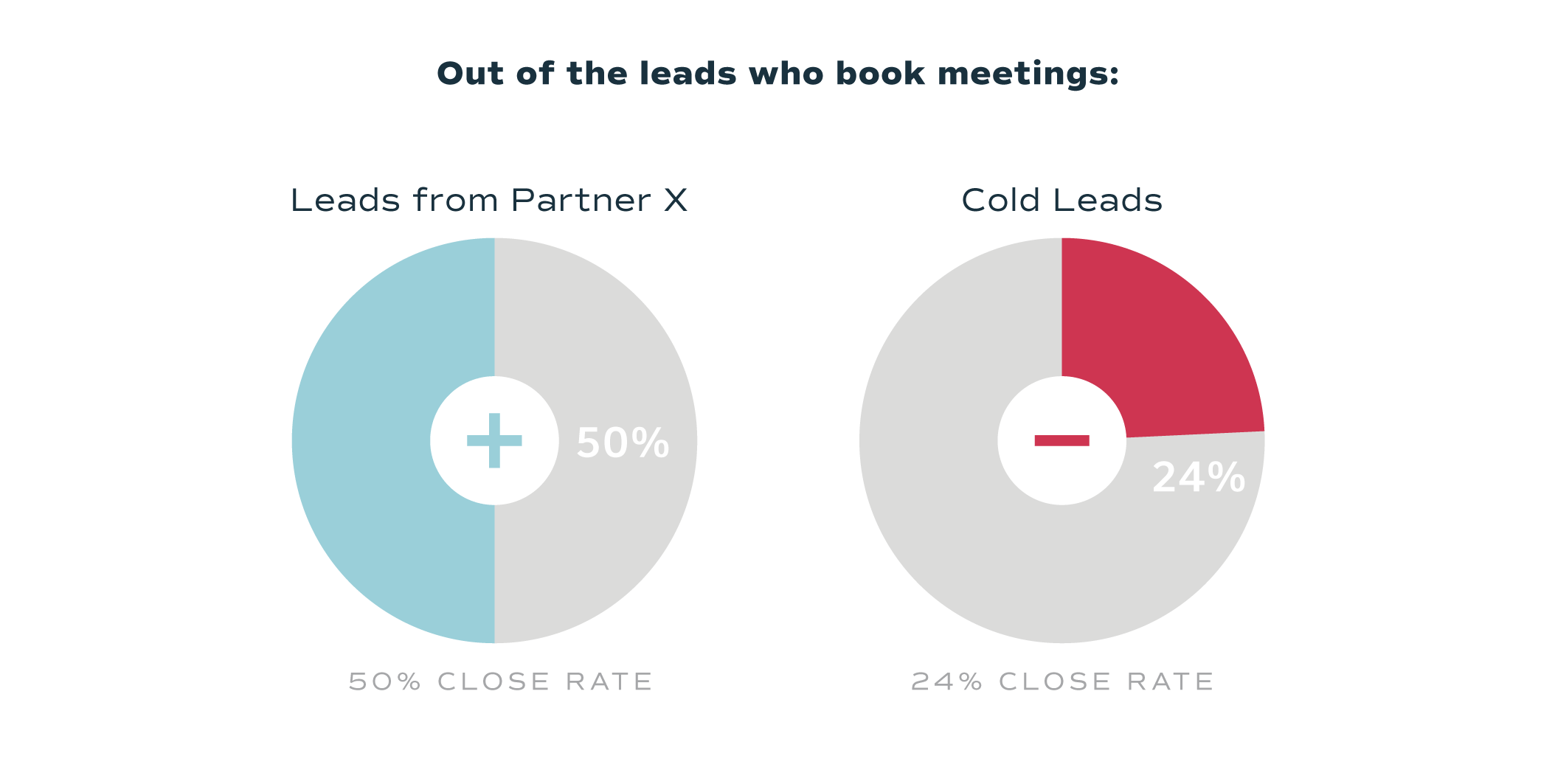Taking a partnerships-led (or “Ecosystem-Led”) approach to sales is more effective than old sales tactics (Don’t believe us? We have the data).
However, many AEs can be apprehensive about the level of effort versus impact on individual KPIs or commission that driving these results might have. How can working with partners positively impact pipeline and close rates for the individual? Plus, the process can be ambiguous: What (if anything) changes about the sales cycle for partner-sourced versus cold leads?
In order to demystify what Ecosystem-Led sales looks like for AEs, we spoke to Alex Richards, an AE at customer service management agency TalentPop. TalentPop is a partner of an eCommerce help desk company that we will call Partner X. As part of their channel partnership, Partner X recommends TalentPop to clients and sends warm leads to the TalentPop partnerships team. Richards works closely with his partnerships team and the leads he receives from Partner X are almost 100X more likely to close than his cold leads in just 34% of the time.
We asked Richards to take us through a step-by-step walkthrough of his sales process, comparing both his process and results with a Partner X sourced lead and a cold lead.
We found that partner-sourced help Richards:
Plus, we have steps other AEs can take to get started working with partner-sourced leads.
Book more meetings
Richards has established a steady flow of 15 leads per month from Partner X. Better yet, all of those leads are pre-vetted (or “Ecosystem Qualified”) and have already expressed interest in the services TalentPop provides, driving Richard’s meeting booking rates amongst those partner-sourced leads up to 40% from his standard rate of 1%.
Here’s how it works:
Partner X sends out a survey to their newly onboarded clients asking about their other pain points or needs. If the client indicates they are looking for customer service support, they refer the client to a handful of partner companies, TalentPop being one of them.
When the leads have been introduced via email to TalentPop leadership, they are round-robined out to the sales team. Therefore, when Richards gets the lead, he already knows:
With this information in mind, Richards reaches out to the lead with a meeting link and, ideally, the leads books a meeting with him directly.
The results
In an average month:
- Richards receives 15 leads from Partner X.
- 40% of those leads book meetings with Richards immediately after he reaches out.
- Comparatively, cold leads from non-partner sources have a meeting booking rate of just 1%.
Streamline the sales pitch and hit higher close rates
When asked what significant differences he sees between initial meetings with cold leads vs leads from Partner X, Richards told us, “It’s like talking to a stranger versus talking to a friend.”
Both Richards and the lead save time by skipping over a significant portion of what would usually be included in the introductory call, including the hurdle of establishing trust between the two parties.
“The conversation steers away from trying to win them as a client to how I can provide them with the best level of service,” he shared. “The trust is already there. The questions are much deeper. Instead of trying to show our value, it’s focused on diving deep into how things work and what’s possible with our services. It’s three levels deeper [than initial meetings with non-partner sourced leads].”
Knowing what to expect from Partner X leads also means that Richards can templatize his pitch process, including providing incentives that supplement the services that Partner X provides. For example, TalentPop offers free assistance setting up Partner X help desks.
While this appeals to some cold leads who happen to be Partner X customers, Richards knows with almost 100% certainty that a lead sent by Partner X will be interested in this part of his pitch. Therefore, he immediately knows to emphasize this value add.
Richards doesn’t need to do anything special for his partner-sourced leads once they reach the pitch part of his sales cycle. In fact, he actually needs to do less work than normal, as the pre-established trust and curated sales pitch are already there before the lead even hits his inbox. As a result, his sales cycle with a Partner X lead is 66% shorter than his sales cycle with a cold lead.
Not only do the partner-sourced deals close quicker, they close more frequently. Richards has a 50% close rate with Partner X leads that have booked an initial meeting. That means that Richards has a consistent stream of leads that, statistically, result in at least three closed deals per month. And according to Richards, this is a modest average. Compare this to cold leads that require more meeting prep and pitching effort: Richards has a 24% close rate with cold leads who have taken an initial meeting.
The results:
- Richards shaves two weeks (or 66%) off of his usual three week sales cycle by jumping right to explaining what implementation of TalentPop would look like and templatizing the process for Partner X customers.
- Out of the meetings booked with leads from Partner X,
Richards has an average close rate of 50%. That’s a 20% close rate for all leads from Partner X. - Compare that to the 24% close rate with the 1% of cold leads who take a meeting —
an overall .24% close rate for cold leads. - From the moment they hit his inbox, leads that Richards receives from Partner X
are almost 100X more likely to close than a cold lead.
Getting started
If these results sound appealing, it’s time to make your partner manager your new work best friend.
The most common key performance indicators (KPIs) for partnerships professionals are:
- Leads generated by partners
- Partner sourced revenue (revenue from deals that are brought to the company 100% by partners)
- Partner influenced revenue (revenue from deals that are partially attributable to a partner)
This means that your partner managers are actively working to bring in leads from partners. Plus, they have a vested interest in helping you close those leads. Therefore, we recommend:
—
For sales professionals looking to expand their use of partnerships, consider Crossbeam Sales Edge. You can use Sales Edge to:
- Easily contact partners and loop in anyone who needs to be involved.
- Get alerts when a partner closes your prospect.
- Quickly find out every partner who has already closed your prospect.







